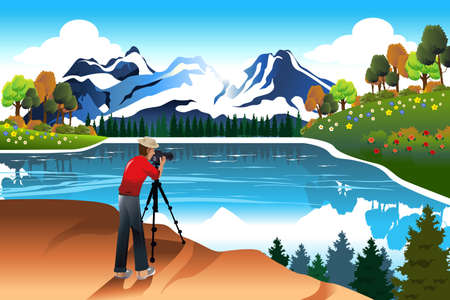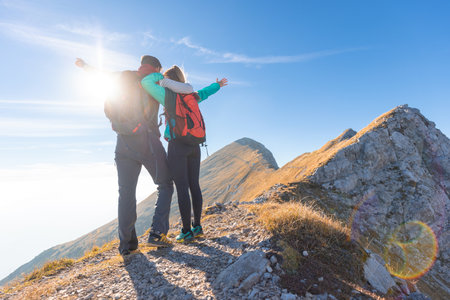Introduction to Midwest Wildlife Watching
The Midwest is often celebrated for its sprawling prairies, dense woodlands, serene lakes, and rolling hills—landscapes that come together to create some of America’s most diverse and unique ecosystems. For hiking enthusiasts with a passion for wildlife watching, this region is a true treasure trove. Unlike other parts of the country where certain species dominate, the Midwest’s mix of grasslands, wetlands, forests, and river valleys offers habitats for an impressive variety of animals, from majestic bald eagles to elusive white-tailed deer and playful river otters. The changing seasons add yet another layer of interest: spring brings migratory birds and bursting wildflowers; summer is alive with butterflies and amphibians; fall features spectacular foliage and busy mammals preparing for winter; while winter’s quiet stillness makes animal tracks easier to spot. This dynamic environment draws nature lovers who seek both adventure on the trails and unforgettable encounters with wildlife. Whether you’re a seasoned birder or just beginning to explore the outdoors, the Midwest invites you to lace up your boots and experience its natural wonders firsthand.
Top Hiking Spots for Wildlife Encounters
If you’re eager to spot native animals while hitting the trails, the Midwest offers some incredible destinations. From dense forests to sprawling wetlands, these areas are teeming with opportunities to see everything from white-tailed deer and foxes to bald eagles and rare songbirds. Below is a look at some of the premier hiking spots and nature preserves in the region, each recognized for its vibrant wildlife.
Minnesota’s Boundary Waters Canoe Area Wilderness
This remote area is famous for its pristine lakes, old-growth forests, and abundant wildlife. While hiking here, it’s not unusual to catch glimpses of moose, black bears, timber wolves, and loons. The peaceful environment makes it a favorite among nature lovers who crave solitude and spectacular animal encounters.
Ohio’s Cuyahoga Valley National Park
Nestled between Cleveland and Akron, Cuyahoga Valley National Park is a haven for birdwatchers and hikers alike. With over 125 miles of trails, visitors might encounter beavers building dams along streams, white-tailed deer grazing in meadows, or great blue herons fishing in wetland areas. The Ohio & Erie Canal Towpath Trail is especially popular for spotting diverse wildlife.
Other Midwest Wildlife Hotspots
| Location | State | Wildlife Highlights |
|---|---|---|
| Shawnee National Forest | Illinois | Bald eagles, bobcats, reptiles |
| Prairie State Park | Missouri | Bison herds, prairie chickens, foxes |
| Necedah National Wildlife Refuge | Wisconsin | Cranes, turtles, whitetail deer |
| Loess Hills State Forest | Iowa | Turtles, turkeys, woodpeckers |
| Savannah Portage State Park | Minnesota | Beavers, otters, black bears |
Tips for Spotting Wildlife on Midwest Trails
- Start your hike early in the morning or around dusk when animals are most active.
- Move quietly and keep noise to a minimum to increase your chances of observing wildlife.
- Bring binoculars for a closer look without disturbing the animals.
- Stick to marked trails and respect park guidelines to help preserve habitats.
Your Next Midwest Adventure Awaits!
No matter which trail you choose, the Midwest’s diverse landscapes make it easy to connect with nature and enjoy memorable wildlife encounters. Whether you’re an avid birder or simply love seeing animals in their natural habitat, these top spots deliver unforgettable outdoor experiences.

3. Native Wildlife Species to Look Out For
One of the biggest thrills of hiking in the Midwest is catching a glimpse of its diverse native wildlife. The region’s forests, prairies, wetlands, and waterways are home to a variety of mammals, birds, and reptiles—many of which are local favorites among nature lovers. Here’s a handy guide to help you identify some of the most iconic species you might encounter on your next outdoor adventure.
Mammals
| Species | Description | Where to Spot |
|---|---|---|
| White-tailed Deer | The classic Midwestern deer with a signature white tail that flashes as it runs away; active at dawn and dusk. | Woodlands, meadows, near water sources across all Midwest states |
| River Otter | Sleek, playful swimmers often seen sliding down muddy banks or floating in rivers and lakes. | Streams, rivers, marshes—especially in protected wildlife areas |
| Eastern Cottontail Rabbit | Small brown-gray rabbits with fluffy white tails; commonly spotted darting across open spaces. | Grasslands, forest edges, suburban parks |
Birds
| Species | Description | Best Season/Location |
|---|---|---|
| Sandhill Crane | Tall, gray birds with red crowns; famous for their bugling calls and dramatic courtship dances. | Spring/fall migration near wetlands and river valleys (notably in Nebraska and Wisconsin) |
| Bald Eagle | America’s iconic raptor with a white head and tail; often seen soaring above lakes and rivers hunting for fish. | Lakeshores and major rivers throughout the Midwest, especially winter months when waters are unfrozen |
| Northern Cardinal | Vibrant red males and subtly colored females; known for their cheerful songs year-round. | Parks, gardens, woodlands—urban and rural alike |
Reptiles & Amphibians
| Species | Description | Typical Habitat |
|---|---|---|
| Blanding’s Turtle | A threatened species with a bright yellow throat and domed shell; symbol of wetland conservation. | Marshes, ponds, slow-moving streams in northern Midwest regions (especially Minnesota, Illinois) |
| Northern Water Snake | Non-venomous but often mistaken for rattlesnakes; dark banded body adapted for aquatic life. | Ponds, lakeshores, riverbanks—often sunning on rocks or logs near water’s edge |
| American Toad | Bumpy brown amphibian with a trilling call; helps control garden pests like beetles and ants. | Damp forests, gardens, fields after spring rains throughout the Midwest |
Midwest Regional Favorites: Why They Matter
The presence of these species highlights the importance of conserving native habitats. Iconic animals like the white-tailed deer and sandhill crane not only enrich the hiking experience but also play crucial roles in local ecosystems. By learning to spot—and respect—these wild neighbors, hikers contribute to ongoing conservation efforts while deepening their connection to the natural beauty of America’s Heartland.
4. Best Times and Seasons for Wildlife Watching
Timing your hike can make all the difference in your wildlife watching experience across the Midwest. Each season brings its own unique opportunities to spot different animals, as their behaviors and habitats change throughout the year. Here’s how to make the most out of each season:
| Season | Wildlife Activity | Best Time to Hike |
|---|---|---|
| Spring | Migration of birds; emergence of mammals from hibernation; amphibian breeding calls | Early morning or late afternoon during March–May |
| Summer | Nesting birds; fawns and other young mammals visible; insect life at peak | Dawn or dusk, especially June–August |
| Autumn | Deer rutting (mating) season; bird migration south; squirrels gathering food | Early morning, September–November |
| Winter | Bald eagles near open water; animal tracks in snow; fewer insects, but easier spotting of mammals against bare trees | Midday for warmth, December–February |
Spring Migration Marvels
If you’re a bird enthusiast, spring is prime time. Head out early in the morning when songbirds are most active and vocal. Many Midwest trails near wetlands or forests come alive with warblers, orioles, and waterfowl returning north.
Sizzling Summer Sights
In summer, look for nesting birds—such as bluebirds or swallows—and keep an eye out for young wildlife like deer fawns and wild turkey poults. Dawn and dusk hikes offer cooler temperatures and more animal activity before midday heat sets in.
Autumn Rutting and Migrations
The fall rut is a highlight for deer watchers, with bucks actively searching for mates—often seen at dawn. This is also a second wave for birders as raptors and songbirds migrate south. Trails near prairies or rivers can offer spectacular views of these phenomena.
Winter Wonders
Though many animals lay low in winter, bald eagles gather around ice-free lakes and rivers. Animal tracks become easier to spot in fresh snow, providing clues to local wildlife even if you don’t see them directly. Aim for midday hikes when sunlight peaks and animals venture out to forage.
5. Wildlife Watching Tips and Local Etiquette
Exploring the Midwest’s rich natural areas offers incredible opportunities for wildlife watching, but it’s important to do so responsibly. Both nature lovers and animals benefit when hikers follow proper etiquette and regional guidelines. Here’s how to make your outdoor adventures safe, enjoyable, and sustainable:
Respectful Animal Observation
- Keep Your Distance: Use binoculars or a camera with a zoom lens to observe animals without disturbing them.
- Stay Quiet: Speak softly and move slowly to avoid startling wildlife.
- No Feeding: Human food can harm animals and disrupt natural behaviors.
- Stick to Trails: Avoid trampling sensitive habitats by staying on designated paths.
Leave No Trace Principles
| Principle | Description |
|---|---|
| Plan Ahead & Prepare | Know local rules, pack essential gear, and check weather conditions. |
| Travel & Camp on Durable Surfaces | Use established trails and campsites to protect fragile ecosystems. |
| Dispose of Waste Properly | Pack out all trash, including food scraps and biodegradable materials. |
| Leave What You Find | Avoid picking plants or disturbing natural features. |
| Minimize Campfire Impact | If fires are allowed, use existing fire rings and keep them small. |
| Respect Wildlife | Observe from a distance; never approach or harass animals. |
| Be Considerate of Others | Share the trail and keep noise levels down for everyone’s enjoyment. |
Regional Rules in the Midwest
- No Pets Off-Leash: Many parks require dogs to be leashed to prevent wildlife disturbance.
- No Drone Zones: Drones are often prohibited in protected areas to reduce stress on animals.
- Seasonal Closures: Some trails or areas may close during nesting or migration seasons—always check park alerts before visiting.
- Pest Prevention: Clean boots and gear before hiking to avoid introducing invasive species like emerald ash borer or zebra mussels.
- No Picking Wildflowers: Protect native plant communities by leaving flowers for others—and for pollinators—to enjoy.
Your Role as a Nature Lover
The Midwest’s diverse wildlife and scenic trails are treasures for all to enjoy. By observing local etiquette, practicing Leave No Trace principles, and following regional rules, you help ensure these wild places remain vibrant for generations to come. Responsible wildlife watching isn’t just good manners—it’s vital for conservation.
6. Essential Gear for Wildlife Watching Hikers
Before you hit the trails to spot deer, songbirds, or foxes in the Midwest, it’s important to pack smart. The region’s varied terrain and shifting weather demand the right gear for both comfort and safety. Here’s a list of must-have items tailored specifically for wildlife watching in the heartland:
| Item | Why It Matters | Midwest-Specific Tip |
|---|---|---|
| Binoculars | Get close-up views of animals from a safe distance | Look for waterproof models—unexpected rain is common in the Midwest |
| Field Guides (Books or Apps) | Quickly identify local birds, mammals, and plants | Choose guides specific to Midwest flora and fauna for accurate spotting |
| Appropriate Clothing | Stay comfortable and protected from the elements | Layer up: mornings can be chilly, afternoons hot; wear moisture-wicking fabrics |
| Sturdy Hiking Boots | Tackle muddy trails, rocky bluffs, and prairie grasslands with ease | Select boots with good ankle support for uneven Midwest terrain |
| Insect Repellent & Sunscreen | Guard against ticks, mosquitoes, and sunburn on exposed skin | The Midwest is notorious for bugs in summer—reapply frequently! |
| Weather-Ready Outerwear | Packed rain jacket or windbreaker protects against sudden showers or gusts | Ponchos are lightweight and cover backpacks too—great for Midwest storms |
| Notebook & Pen/Pencil | Jot down sightings or sketch interesting wildlife behaviors on the go | A waterproof notebook is handy during damp hikes or after summer rains |
| Daypack with Hydration System | Carries all your essentials and keeps water accessible during long hikes | Bottles or hydration bladders are a must; Midwest humidity can dehydrate quickly |
| Pocket Snacks (Trail Mix, Jerky) | Sustain energy while minimizing noise that could scare wildlife away | Avoid crinkly wrappers—opt for reusable containers to keep things quiet and eco-friendly |
| Camera (Optional) | Capture those once-in-a-lifetime moments without disturbing animals | A zoom lens helps you photograph wildlife from a respectful distance in open prairies or dense woods |
Being well-equipped makes your wildlife adventure safer and more enjoyable. Always check trail regulations at your chosen Midwest park—some may restrict certain gear like drones or off-trail hiking. And remember: leave no trace to keep these habitats thriving for future nature lovers!
7. Connecting with Local Conservation Efforts
Wildlife watching in the Midwest is not just about observing from afar—it’s also about giving back to the ecosystems and habitats that make these experiences possible. Hikers can play a vital role in supporting local conservation efforts, both on and off the trails. By getting involved with community science projects, joining local conservation groups, or participating in habitat restoration events, you help protect the region’s unique wildlife for future generations.
How Hikers Can Get Involved
| Action | How to Participate |
|---|---|
| Community Science | Join citizen science apps like iNaturalist or eBird, record your sightings during hikes, and contribute valuable data to researchers tracking animal populations. |
| Local Conservation Groups | Become a member or volunteer with organizations such as The Nature Conservancy – Midwest, local Audubon Societies, or Friends of State Parks chapters to support habitat preservation projects. |
| Habitat Restoration Events | Participate in native planting days, invasive species removal, or river clean-ups organized by local nonprofits or park services. |
Benefits of Getting Involved
- Directly supports native wildlife and plant species survival.
- Builds community with other nature lovers and outdoor enthusiasts.
- Enhances your understanding of local ecosystems and their challenges.
Finding Opportunities Near You
Check bulletin boards at trailheads, visit state park websites, or connect through social media groups focused on Midwest nature activities. Many events are family-friendly and offer a hands-on way to make a difference while enjoying the great outdoors. By taking these steps, hikers become stewards of the land—ensuring that Midwest wildlife watching remains vibrant and accessible for years to come.


